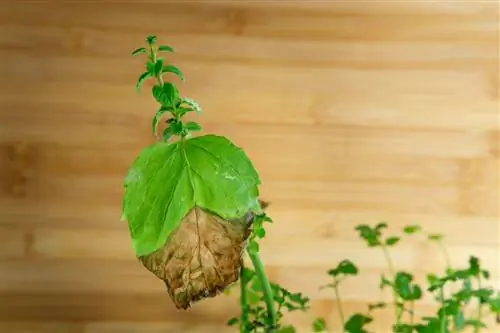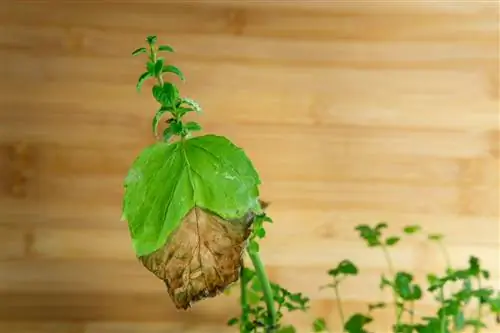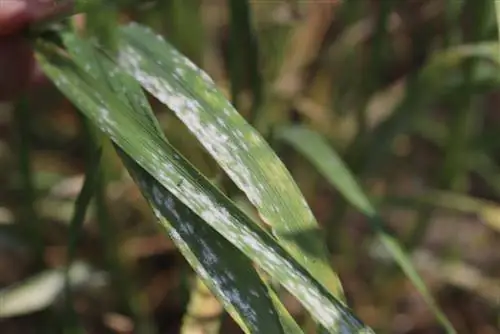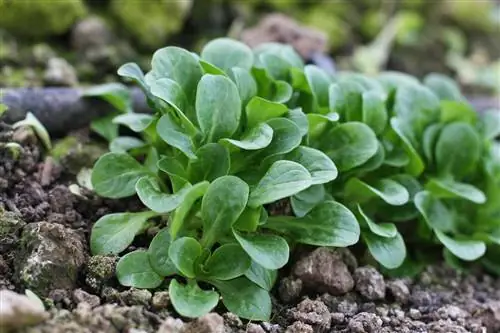- Author admin [email protected].
- Public 2023-12-16 16:46.
- Last modified 2025-01-23 11:22.
The popular mint is robust and easy to grow. However, you should be careful if there is a white, mealy coating on the leaves. If this coating can be easily wiped off, it is powdery mildew. This can significantly damage the plant.

What is the cause of powdery mildew on mint?
The powdery mildew on mint is caused by a fungus. The spores of the mildew fungus are dispersed by the wind in dry weather. This is how they get from infected mint to he althy plants.
How does mildew infestation occur?
The wind causes the spores of the mildew fungus to reach the leaves of the mint. The spores germinate there and the fungus forms a mycelium. This removes water and nutrients from the leaves. The leaves die off. The fungus quickly spreads to other leaves and the stems of the mint. Since the plant has fewer leaves, photosynthesis is also limited. The plant has difficulty processing nutrients and grows poorly.
How can I treat powdery mildew on mint?
If mint is infected with powdery mildew, you should first remove the affected parts of the plant and dispose of them with household waste. Treatment with the following measures is then possible:
- Spraying with a mixture of whole milk and water
- Spraying with a mixture of baking soda, rapeseed oil and water
- Treat soil with primary rock powder.
These measures are aimed at combating the fungus. You can also strengthen the plants by watering them with horsetail tea and potassium fertilizer without any nitrogen.
Tip
Can I still use the leaves of mint with mildew?
Powdery mildew is only superficially anchored on the leaves and can be washed off. The fungus does not produce toxins that are poisonous to humans. In principle, you can therefore use the leaves even after a mildew attack. Nevertheless, allergy sufferers should avoid mint leaves with mildew.






